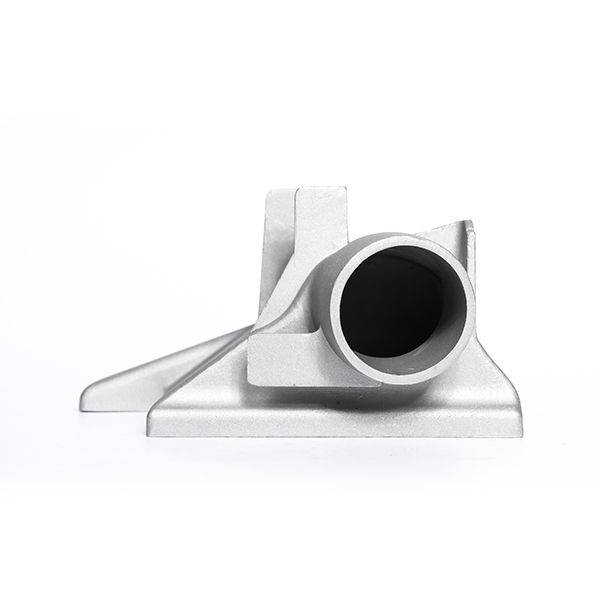Mobile:+86-311-808-126-83
Email:info@ydcastings.com
aerospace aluminum castings
Aerospace Aluminum Castings Innovations and Applications
Aerospace aluminum castings play a crucial role in the production of lightweight, high-strength components used in various aircraft and spacecraft applications. The aerospace industry continually demands materials that can withstand extreme conditions while minimizing weight to improve fuel efficiency and performance. Aluminum, with its remarkable properties, emerges as a preferred material for aerospace components. This article delves into the significance, advantages, and recent innovations in aerospace aluminum castings.
The Importance of Aluminum in Aerospace
Aluminum is renowned for its excellent strength-to-weight ratio, resistance to corrosion, and ease of machining. These characteristics make it an ideal material for aerospace applications, where every gram counts. In an industry where performance and safety are paramount, aluminum castings provide manufacturers with the ability to create components that meet stringent regulatory standards while optimizing overall aircraft performance.
Casting processes, such as sand casting, investment casting, and die casting, allow for the formation of complex geometries that are often required in aerospace design. The versatility of aluminum castings means that they can be used for a wide range of components, including engine parts, structural supports, and aerodynamic surfaces.
Advantages of Aerospace Aluminum Castings
1. Weight Reduction Aluminum’s lightweight nature significantly reduces the overall weight of aircraft, leading to enhanced fuel efficiency and payload capacity. This aspect is particularly important as airlines increasingly seek to reduce operational costs and environmental impact.
2. Strength and Durability Despite their light weight, aluminum castings provide high tensile strength, ensuring that components can withstand the stresses and strains of flight. Advanced aluminum alloys, such as those containing lithium or zinc, further enhance these properties.
3. Corrosion Resistance The aerospace environment exposes components to various elements, including moisture and chemicals. Aluminum naturally forms a protective oxide layer that prevents corrosion, extending the lifespan of components and reducing maintenance costs.
aerospace aluminum castings

4. Design Flexibility The casting process allows for intricate designs that can help reduce the number of parts needed in an assembly. This streamlining leads to lower manufacturing costs and fewer potential points of failure in critical structures.
5. Recyclability Aluminum is highly recyclable, making it an environmentally friendly option in aerospace manufacturing. The recycling process consumes significantly less energy than primary aluminum production, contributing to a more sustainable industry.
Innovations in Aerospace Aluminum Casting
Recent advancements in technology have further improved aerospace aluminum casting processes. Additive manufacturing and advanced casting techniques such as 3D printing have emerged, allowing for rapid prototyping and the production of more complex geometries. These innovations not only reduce lead times but also improve the precision of components, which is critical in aerospace applications.
Additionally, the development of new aluminum alloys specifically tailored for aerospace applications has provided engineers with more choices in material selection. These alloys often feature enhanced properties, such as better fatigue strength and improved thermal resistance, making them suitable for high-performance applications like jet engines and structural frames.
Conclusion
Aerospace aluminum castings are an integral component of modern aeronautical engineering. With their exceptional properties and the continuous advancement of casting technologies, aluminum castings enable the production of innovative, efficient, and durable aircraft and spacecraft components. As the aerospace industry embraces sustainability and seeks to optimize performance, the role of aluminum castings will undoubtedly expand, driving further innovation and contributing to the future of flight.
In summary, aerospace aluminum castings stand out as a vital technology, bridging the gap between performance and efficiency in the quest for safer, more fuel-efficient aviation solutions. As research and development continue to progress, the possibilities for aluminum casting in aerospace applications are immense, promising a brighter future for aerospace engineering.
-
Why Should You Invest in Superior Pump Castings for Your Equipment?NewsJun.09,2025
-
Unlock Performance Potential with Stainless Impellers and Aluminum End CapsNewsJun.09,2025
-
Revolutionize Your Machinery with Superior Cast Iron and Aluminum ComponentsNewsJun.09,2025
-
Revolutionize Fluid Dynamics with Premium Pump ComponentsNewsJun.09,2025
-
Optimizing Industrial Systems with Essential Valve ComponentsNewsJun.09,2025
-
Elevate Grid Efficiency with High-Precision Power CastingsNewsJun.09,2025











